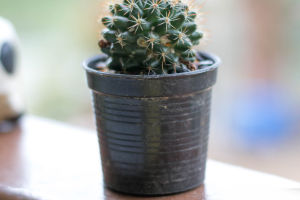Roses: Eternal Charm
Roses have captivated the hearts and minds of people for centuries. With their stunning beauty, fragrant aroma, and deep symbolism, these flowers are more than just a pretty sight.
They are a symbol of love, passion, and romance, making them one of the most cherished flowers around the world.
A Brief History of Roses
The history of the rose dates back thousands of years, with fossil evidence suggesting that roses have existed for over 35 million years. Ancient civilizations like the Greeks, Romans, and Egyptians revered the rose for its beauty and medicinal properties.
The cultivation of roses began in the Middle East, where they were first grown for their fragrance. Over time, roses spread across Europe and Asia, becoming an essential part of gardens and landscapes. By the 18th century, new varieties of roses were being bred, resulting in the diverse range of colors, shapes, and sizes we see today.
Types of Roses
Roses come in a stunning variety of types, each with its own unique characteristics. Here are a few of the most popular types:
Hybrid Tea Roses: Known for their large, well-formed blooms, hybrid tea roses are the classic choice for floral arrangements. They come in almost every color imaginable, making them a favorite for bouquets and centerpieces.
Floribunda Roses: These roses produce clusters of smaller blooms, creating a dazzling display of color. Floribunda roses are perfect for adding a splash of color to your garden.
Grandiflora Roses: A cross between hybrid tea and floribunda roses, grandiflora roses offer the best of both worlds. They have large blooms like hybrid teas but grow in clusters like floribundas.
Climbing Roses: As the name suggests, these roses are perfect for trellises, fences, and walls. Their long, arching canes can be trained to grow vertically, creating a dramatic effect in any garden.
Miniature Roses: Small in size but big on beauty, miniature roses are perfect for containers, borders, or small garden spaces. Despite their size, they offer all the charm of larger roses.
Colors and Symbolism
One of the most enchanting aspects of roses is their color, each with its own symbolism. Here’s a quick guide to what different rose colors represent:
Red Roses: The ultimate symbol of love and passion, red roses are the go-to choice for expressing romantic feelings.
White Roses: Representing purity and innocence, white roses are often used in weddings and ceremonies.
Yellow Roses: A symbol of friendship and joy, yellow roses are perfect for celebrating happy occasions and expressing gratitude.
Pink Roses: These roses convey admiration, gratitude, and appreciation. Light pink roses represent gentleness, while darker pinks symbolize gratitude.
Orange Roses: A vibrant symbol of enthusiasm and energy, orange roses are perfect for conveying excitement and admiration.
Blue Roses: While not naturally occurring, blue roses represent mystery and the unattainable. They are often seen as a symbol of hope and the pursuit of the impossible.
Uses of Roses
Floral Arrangements: Roses are a classic choice for bouquets and decorations, suitable for any occasion.
Culinary Uses: Rose water and petals are used in Middle Eastern and Indian cuisine to flavor dishes and desserts.
Skincare and Beauty: Rose oil and rose water are popular in skincare for their hydrating and soothing properties.
Aromatherapy: Rose essential oil is used to reduce stress and promote emotional well-being.
Medicinal Uses: Historically used for their antioxidant and anti-inflammatory properties.
Craft and Decoration: Dried rose petals are used in crafts, potpourri, and home décor items.
Symbolic and Cultural Significance: Roses are integral to weddings, memorials, and various ceremonies, symbolizing love, remembrance, and respect.
Care and Cultivation
Growing roses can be a rewarding experience, but it requires some knowledge and care. Here are a few tips for cultivating healthy roses:
Planting: Choose a sunny location with well-drained soil. Roses thrive in areas that receive at least six hours of sunlight each day.
Watering: Water your roses deeply but infrequently. It’s better to give them a good soaking once a week rather than frequent light watering. Make sure to water at the base to avoid wetting the foliage, which can lead to disease.
Pruning: Pruning is essential for maintaining the shape and health of your rose plants. It’s best to prune in early spring before new growth begins. Remove dead or diseased wood and cut back healthy stems to encourage new blooms.
Fertilizing: Feed your roses with a balanced fertilizer during the growing season. This will promote strong growth and abundant blooms.
Interesting Fact: The Rose in Pop Culture
Did you know that roses have made their mark in pop culture as well? One of the most famous references is in the beloved novel and film “Beauty and the Beast,” where a single rose represents the passage of time and the power of love. Roses also play a significant role in poetry, music, and art, symbolizing everything from beauty and love to secrecy and mystery.
Roses are more than just flowers; they are a timeless symbol of beauty, love, and elegance. Whether you’re growing them in your garden, giving them as a gift, or simply enjoying their fragrance, roses have the power to touch the heart and soul. Their rich history, diverse varieties, and deep symbolism make them a favorite among flower lovers worldwide. So, the next time you encounter a rose, take a moment to appreciate its delicate beauty and the emotions it evokes.
The Language of Roses: 🌹 Exploring the Symbolism and Meaning Behind Different Rose Colors 🥀
Video by Giftndflowers


